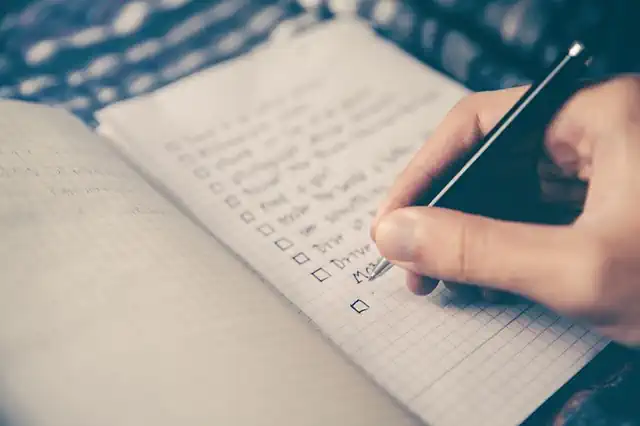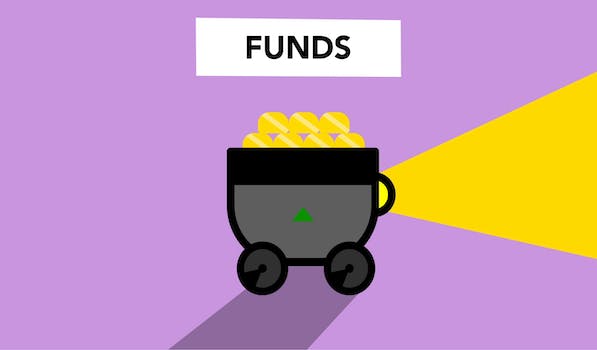How To Budget And Save Money Worksheets
“Take control of your finances with our easy-to-use budget and savings worksheets.”
Introduction
Introduction: Budgeting and saving money are essential skills that everyone should learn. One of the best ways to develop these skills is by using budgeting and saving money worksheets. These worksheets provide a structured way to track your income, expenses, and savings goals. In this article, we will discuss how to use budgeting and saving money worksheets effectively to help you achieve your financial goals.
Creating a Monthly Budget Worksheet
Budgeting and saving money can be a daunting task, but it doesn’t have to be. With the help of budget and save money worksheets, you can easily track your expenses and savings. In this article, we will guide you through creating a monthly budget worksheet.
Firstly, you need to gather all your financial information. This includes your income, expenses, and savings. You can use your bank statements, bills, and receipts to get an accurate picture of your finances. Once you have all your financial information, you can start creating your monthly budget worksheet.
The first section of your budget worksheet should be your income. This includes your salary, bonuses, and any other sources of income. You should list your income sources and the amount you receive each month. This will give you a clear idea of how much money you have coming in each month.
The next section of your budget worksheet should be your expenses. This includes all your monthly bills such as rent, utilities, and groceries. You should list all your expenses and the amount you spend each month. It’s important to be as accurate as possible when listing your expenses. This will help you identify areas where you can cut back on spending.
Once you have listed all your income and expenses, you can calculate your net income. This is the amount of money you have left over after deducting your expenses from your income. If your net income is negative, it means you are spending more than you earn. In this case, you need to identify areas where you can cut back on spending.
The next section of your budget worksheet should be your savings. This includes any money you set aside each month for emergencies, retirement, or other financial goals. You should list your savings and the amount you save each month. It’s important to prioritize your savings and make sure you are saving enough to meet your financial goals.
Finally, you should review your budget worksheet regularly. This will help you identify any changes in your income or expenses. You can adjust your budget accordingly to ensure you are staying on track with your financial goals.
In conclusion, creating a monthly budget worksheet is an essential step in budgeting and saving money. It helps you track your income, expenses, and savings, and identify areas where you can cut back on spending. By following the steps outlined in this article, you can create a budget worksheet that works for you and helps you achieve your financial goals.
Tracking Your Expenses with a Spending Log Worksheet

Budgeting and saving money can be a daunting task, but it doesn’t have to be. One of the most effective ways to get started is by tracking your expenses with a spending log worksheet. This simple tool can help you identify where your money is going and make adjustments to your spending habits.
To begin, you’ll need to create a spending log worksheet. This can be done on paper or using a spreadsheet program like Microsoft Excel or Google Sheets. Start by listing all of your monthly expenses, including rent or mortgage payments, utilities, groceries, transportation, entertainment, and any other bills or expenses you have.
Next, track your spending for each category throughout the month. This can be done by saving receipts, using a budgeting app, or simply writing down your expenses as you make them. Be sure to include any cash purchases as well, as these can often be overlooked.
At the end of the month, add up your expenses for each category and compare them to your budget. If you’ve overspent in any areas, take note of where you can cut back in the future. For example, if you’ve spent more on dining out than you budgeted for, consider cooking at home more often or finding cheaper restaurants to visit.
Using a spending log worksheet can also help you identify areas where you can save money. For example, if you notice that you’re spending a lot on transportation, consider carpooling or taking public transportation instead of driving alone. If you’re spending a lot on groceries, look for ways to save by buying in bulk or using coupons.
Another benefit of using a spending log worksheet is that it can help you stay accountable to your budget. By tracking your expenses throughout the month, you’ll be more aware of your spending habits and less likely to overspend. You can also use your spending log to set goals for yourself, such as reducing your spending in certain categories or saving a certain amount of money each month.
In addition to tracking your expenses with a spending log worksheet, there are other budgeting and saving money worksheets that can be helpful. For example, a budget worksheet can help you create a monthly budget and track your income and expenses. A debt repayment worksheet can help you prioritize your debts and create a plan for paying them off.
Overall, using budgeting and saving money worksheets can be a great way to take control of your finances and achieve your financial goals. Whether you’re trying to save for a down payment on a house, pay off debt, or simply live within your means, these tools can help you get there. So why not give them a try? With a little effort and discipline, you can create a budget that works for you and start saving money today.
Setting Financial Goals with a Savings Plan Worksheet
Are you tired of living paycheck to paycheck? Do you want to start saving money but don’t know where to begin? The first step is to set financial goals and create a savings plan. One helpful tool for achieving this is a budget and save money worksheet.
A budget and save money worksheet is a simple document that helps you track your income and expenses. It allows you to see where your money is going and identify areas where you can cut back. By using a budget and save money worksheet, you can create a plan to save money and achieve your financial goals.
To get started, you’ll need to gather some information. First, you’ll need to know your monthly income. This includes your salary, any bonuses or commissions, and any other sources of income. Next, you’ll need to list your monthly expenses. This includes rent or mortgage payments, utilities, groceries, transportation, and any other bills you have.
Once you have this information, you can start filling out your budget and save money worksheet. Begin by listing your income at the top of the page. Then, list your expenses in categories such as housing, transportation, and food. Be sure to include any other expenses you have, such as entertainment or clothing.
Next, subtract your expenses from your income. This will give you your monthly savings. If your expenses are greater than your income, you’ll need to find ways to cut back. Look for areas where you can reduce your spending, such as eating out less or canceling subscriptions you don’t use.
Once you have a budget in place, it’s time to set financial goals. This could be anything from saving for a down payment on a house to paying off credit card debt. Whatever your goals are, make sure they are specific and measurable. For example, instead of saying “I want to save money,” say “I want to save $500 a month.”
To help you achieve your financial goals, create a savings plan. This is where your budget and save money worksheet comes in handy. Look for areas where you can cut back on expenses and redirect that money towards your savings goals. For example, if you’re spending $100 a month on cable TV, consider canceling it and putting that money towards your savings.
Another way to save money is to automate your savings. Set up a direct deposit from your paycheck into a savings account. This way, you won’t even see the money in your checking account, making it easier to resist the temptation to spend it.
Finally, track your progress. Use your budget and save money worksheet to monitor your spending and savings each month. Celebrate your successes and adjust your plan as needed. Remember, achieving financial goals takes time and effort, but with a budget and save money worksheet, you can stay on track and achieve your dreams.
In conclusion, setting financial goals and creating a savings plan is essential for achieving financial stability. A budget and save money worksheet is a helpful tool for tracking your income and expenses and identifying areas where you can cut back. By setting specific and measurable goals and creating a savings plan, you can achieve your dreams and live a financially secure life. So, what are you waiting for? Start budgeting and saving today!
Reducing Debt with a Debt Repayment Worksheet
Budgeting and saving money can be a daunting task, especially if you have a lot of debt to pay off. However, with the right tools and mindset, it is possible to reduce your debt and start saving for your future. One of the most effective tools for reducing debt is a debt repayment worksheet.
A debt repayment worksheet is a simple tool that helps you track your debt and create a plan to pay it off. It allows you to see exactly how much you owe, how much interest you are paying, and how long it will take to pay off your debt. By using a debt repayment worksheet, you can create a realistic plan to pay off your debt and start saving money.
To create a debt repayment worksheet, you will need to gather some information about your debt. This includes the total amount you owe, the interest rate, and the minimum monthly payment. You can find this information on your credit card statements or loan documents.
Once you have gathered this information, you can start filling out your debt repayment worksheet. The worksheet should include a list of all your debts, the total amount owed, the interest rate, and the minimum monthly payment. You should also include a column for the amount you plan to pay each month and the estimated time it will take to pay off each debt.
When creating your debt repayment plan, it is important to prioritize your debts. You should focus on paying off high-interest debts first, as they will cost you more money in the long run. Once you have paid off your high-interest debts, you can focus on paying off your other debts.
To make your debt repayment plan more manageable, you may want to consider consolidating your debts. This involves taking out a loan to pay off all your debts, and then making one monthly payment towards the loan. This can help you save money on interest and make it easier to keep track of your payments.
In addition to creating a debt repayment plan, it is important to create a budget to help you save money. A budget is a plan for how you will spend your money each month. It allows you to see where your money is going and make adjustments to your spending habits.
To create a budget, you will need to track your income and expenses. This includes your monthly income, as well as your expenses for things like rent, groceries, and entertainment. You can use a budgeting app or spreadsheet to help you track your expenses.
Once you have tracked your expenses, you can start making adjustments to your spending habits. This may involve cutting back on unnecessary expenses, such as eating out or buying new clothes. You can also look for ways to save money on things like groceries and utilities.
By creating a budget and using a debt repayment worksheet, you can reduce your debt and start saving money for your future. It may take some time and effort, but with the right tools and mindset, you can achieve your financial goals. Remember to stay focused and motivated, and don’t be afraid to ask for help if you need it.
Maximizing Your Savings with a Budget Review Worksheet
Budgeting and saving money can be a daunting task, but it is essential for financial stability and achieving your financial goals. One of the best ways to get started is by using budget and save money worksheets. These worksheets can help you track your expenses, identify areas where you can cut back, and set realistic savings goals.
The first step in using a budget and save money worksheet is to gather all of your financial information. This includes your income, expenses, debts, and savings. You can use your bank statements, credit card statements, and bills to get a clear picture of your finances.
Once you have all of your financial information, it’s time to start filling out the worksheet. The first section of the worksheet should be dedicated to your income. This includes your salary, any bonuses or commissions, and any other sources of income. Be sure to include all sources of income, no matter how small.
The next section of the worksheet should be dedicated to your expenses. This includes all of your monthly bills, such as rent or mortgage payments, utilities, and insurance. It’s important to be as detailed as possible when listing your expenses. This will help you identify areas where you can cut back.
After you have listed all of your expenses, it’s time to review your spending habits. Look for areas where you can cut back, such as eating out or buying unnecessary items. You can use the worksheet to set a budget for each category of expenses, such as groceries or entertainment.
Once you have set a budget for each category of expenses, it’s time to start tracking your spending. You can use the worksheet to record your expenses and compare them to your budget. This will help you stay on track and avoid overspending.
In addition to tracking your expenses, it’s important to set realistic savings goals. You can use the worksheet to set a savings goal for each month or year. Be sure to include any debt payments in your savings goals.
Finally, it’s important to review your budget and savings goals regularly. You can use the worksheet to track your progress and make adjustments as needed. This will help you stay on track and achieve your financial goals.
In conclusion, using a budget and save money worksheet is a great way to get started on the path to financial stability. By tracking your expenses, setting realistic savings goals, and reviewing your budget regularly, you can maximize your savings and achieve your financial goals. So why not give it a try? Your future self will thank you.
Conclusion
Conclusion: Budgeting and saving money are essential skills that everyone should learn. Using worksheets can be a helpful tool in achieving financial goals. By tracking expenses, setting realistic budgets, and prioritizing savings, individuals can take control of their finances and work towards a more secure financial future. With dedication and discipline, anyone can learn to budget and save money effectively.







